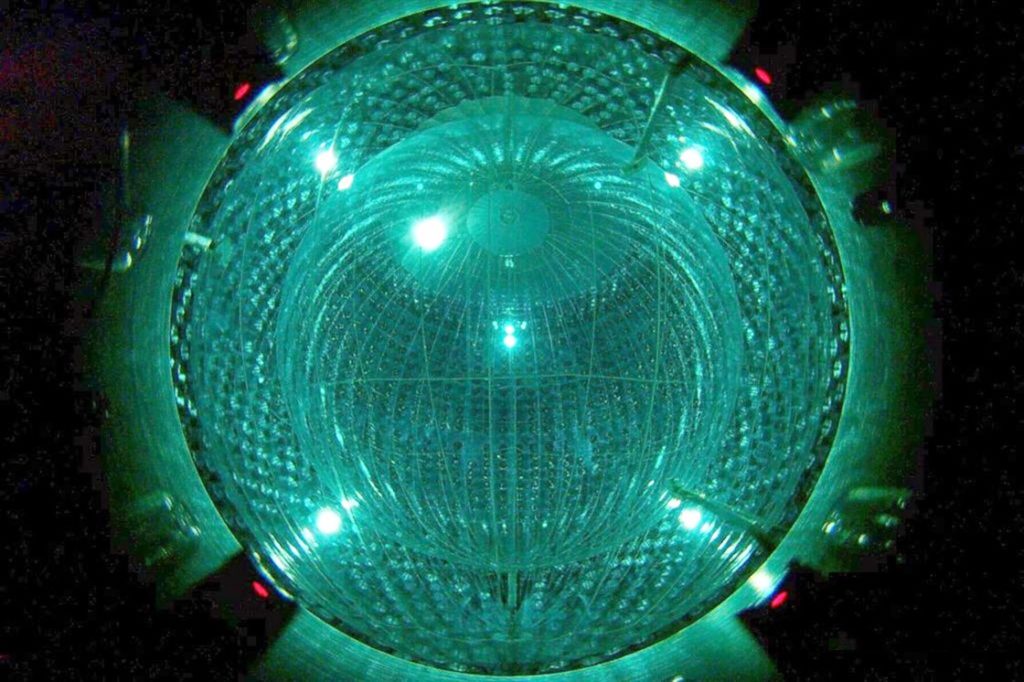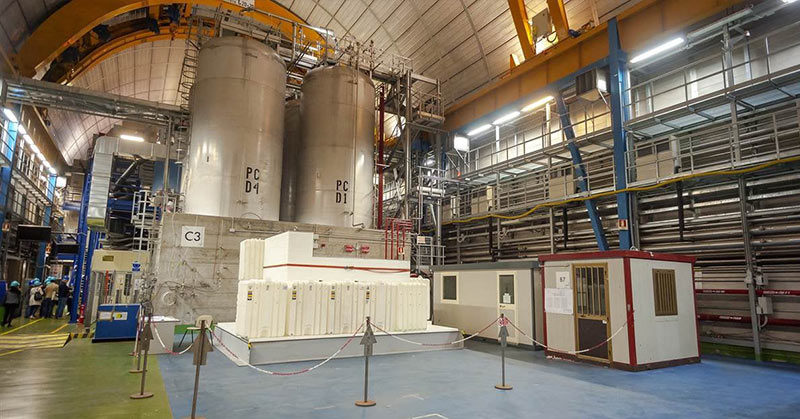For millennia, humans have looked up at the sky and wondered what forces power the sun and stars. Many early societies chalked it up to the work of deities or a higher power. As technology and scientific knowledge has advanced, we have been able to probe further into space and answer some of these burning questions.
A new landmark study has, for the first time ever, detected the particles that power our sun and stars. These microscopic particles, called neutrinos, are finally providing scientists with answers as to how our galaxy came to be.
What Are Neutrinos?
Neutrinos are one of the most abundant particles in the universe. Despite this, they are incredibly difficult to detect because they interact very little with other forms of matter. But what is a neutrino exactly? Aksel L. Hallin, a physics professor at Queen’s University and the Sudbury Neutrino Observatory, offers the following description:
“A neutrino is a subatomic particle that is very similar to an electron, but has no electrical charge and a very small mass, which might even be zero.” [1]
Wolfgang Pauli was the first person to suggest that neutrinos might exist in 1930. No one detected them, however, until 1955. There are a few natural sources of neutrinos:
- The radioactive decay of elements within the earth.
- Fusion reactions in the Sun.
- Supernovae.
- The dark matter of the universe.
Scientists have many questions surrounding neutrinos, however one stands out against the rest. Many refer to it as the “solar neutrino problem”. Essentially, over the last few decades, every experiment on land has detected very few solar neutrinos. So few, that there is no way they could produce the amount of energy that the sun emits.
Read: A golden chamber buried under a mountain in Japan contains water so pure it can dissolve metal.
Study: The First Detection of Neutrinos
On November 25, 2020, scientists published a landmark study in the journal Nature. In this study, they reported that they’ve made the first detection of neutrinos that they’ve traced to carbon-nitrogen-oxygen fusion in the sun. This is also known as the CNO cycle [2].
The scientists were working out of the Italian National Institute for Nuclear Physics, in the Gran Sasso particle physics laboratory. It is the largest underground research center in the world, beneath Italy’s Apennine Mountains.

Image Credit: Borexino Collaboration
The team detected the neutrinos using the extremely sensitive Borexino detector. This detector looks for neutrinos that are emitted during nuclear fusion at the sun’s core. It contains a dark, 300-tonne water tank in which neutrinos from the sun decay. Trillions of neutrinos pass through the detector every second, but it can only detect a few dozen of them per day. It does so by looking for faint flashes of light.
Gioacchino Ranucci is one of the researchers who has been on the project since 1990. He says that over the last few decades, the Borexino detector has been able to detect neutrinos from the sun’s main proton-proton chain reactions. CNO neutrinos, however, have been much more elusive. The detector only picks up about seven of them per day.
“[Our study is] really a breakthrough for solar and stellar physics,” he says [3].
The detection of CNO neutrinos has revealed, for the first time, the main nuclear reaction that most stars use to fuse hydrogen into helium.
The CNO Cycle
Almost all stars emit massive amounts of energy, including our own sun. They do this by fusing hydrogen into helium. Essentially, this is a way of “burning” hydrogen, which is the most abundant element in the universe. It is also its main fuel source.
99 percent of the sun’s energy comes from proton-proton fusion. This creates elements like beryllium, lithium, and boron. These elements are then broken down into helium.
Other stars, however, that are much larger and hotter than our sun use another method of hydrogen-helium fusion: CNO fusion. This is the dominant energy source that powers stars heavier than the sun [4].
In the CNO cycle, four hydrogen nuclei fuse into one helium nucleus. This happens through a series of reactions between carbon, nitrogen, and oxygen [5].
Many scientists believe that the CNO cycle is the primary type of fusion in the universe. It is difficult to detect it in our sun, however, because it is relatively cool compared to other stars. This study revealed the first concrete evidence that the CNO cycle is at work in the sun and the stars.
Understanding our Universe
Gabriel Orebi Gann is a particle physicist at UCLA Berkeley who was not involved in the study. She does, however, applaud the research as a “major milestone” in the field.
“This discovery takes us a step closer to understanding the composition of the core of our sun, and the formation of heavy stars,” she said [3].
She says that since neutrinos are able to pass through most matter without effect, scientists can use them to learn about regions of the universe that would otherwise be out of reach. For this reason, there are several detectors around the world, watching for their tell-tale flashes of light.
One theory is that neutrinos from the Big Bang may be responsible for some of the “dark matter” that is so abundant in our universe. She says that these fleeting particles may also offer an explanation as to why anything in our universe exists at all, rather than being just a big, empty space.
Sources
- https://www.scientificamerican.com/article/what-is-a-neutrino/
- https://www.nature.com/articles/s41586-020-2934-0
- https://www.nbcnews.com/science/space/first-time-scientists-detect-ghostly-signal-reveals-engine-universe-n1248982
- https://www.sciencedaily.com/releases/2020/11/201125154811.htm
- https://www.britannica.com/science/CNO-cycle

